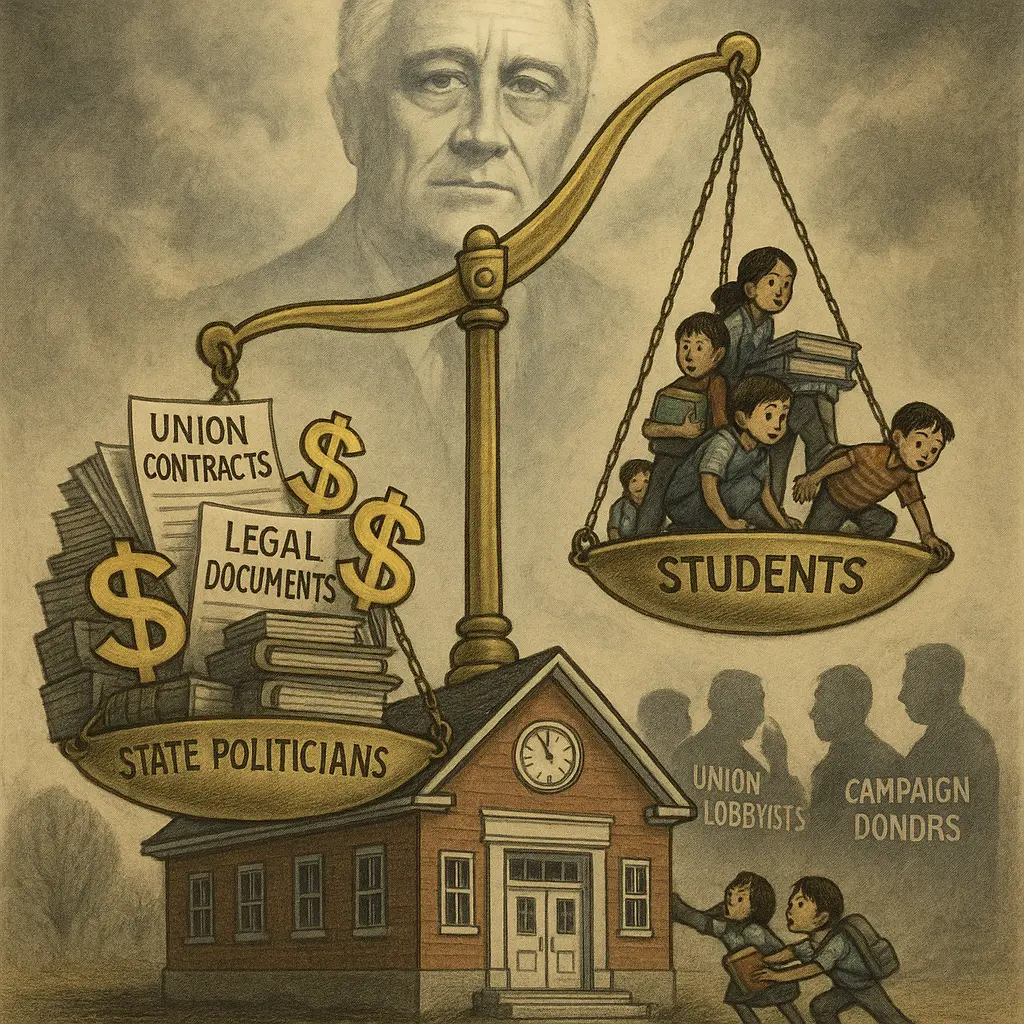
An excerpt from The Politics of Education K-12
Why FDR Opposed Public Union Negotiations
When I started teaching in 1970, I learned that Franklin D. Roosevelt did not support public union negotiations for salaries and benefits. This was surprising to me because FDR supported private unions and helped create the National Labor Relations Board. Why did he take a different stance on public unions? source.
FDR believed that city, county, and state governments should set wages and benefits for public workers. He thought public employees should be able to join unions, but it did not make sense for them to bargain with government employers.
How Negotiations Hurt Schools
To prepare for negotiations, schools often hire expensive labor attorneys. These attorneys have created a costly system that grows each year, becoming a burden on school budgets source.
After working with public unions for over 40 years, I believe FDR was mostly right. Negotiations with public school unions take leaders away from improving schools. They also waste time and taxpayer money that should help students.
The David vs. Goliath Struggle
In strong public union states, local employers often feel like David facing Goliath. The local public union and its state or national partners have the advantage. And it’s not just teachers’ unions. Bus drivers’ unions, administrators’ unions, and support staff unions are involved too.
Because of laws and court rulings, many public employees get annual raises based on seniority, high-cost health insurance with low employee contributions, and large employer payments to state-controlled pensions source.
Political Influence of Public School Unions
Public school unions in many states hold power because they give campaign contributions and endorsements to both Democratic and Republican candidates source-1 source-2.
In return, these unions gained more power in negotiations. From the 1960s through the 1990s, laws were passed that gave unions more leverage source. In New York, Democrats received much of this support, but Republicans also benefited.
A Costly Cycle for Schools
To try to balance the scale, school districts keep spending on labor attorneys source. This has become an expensive and growing burden on schools.
While private union influence has shrunk due to globalization and technology source, public school unions have become stronger in states with laws that favor unions.
Looking at National Trends
States like Ohio and Wisconsin have tried to balance these issues source. In 2016, the U.S. Supreme Court tied 4–4 on a case that could have hurt public union finances, letting the current system stay source.
Later, the Court partially reversed that decision, but we will see how this plays out, especially in states where unions have strong support.
Final Thoughts
Public school unions have shaped our education system for decades. However, leaders need to consider how these negotiations can drain resources that should go directly to helping students learn and succeed.
Franklin D. Roosevelt saw this many years ago. If we want strong schools, we need to ensure our focus and funding support students, not just the politics of public-school unions.
Learn more in Lonnie Palmer’s book, The Politics of Education K-12.